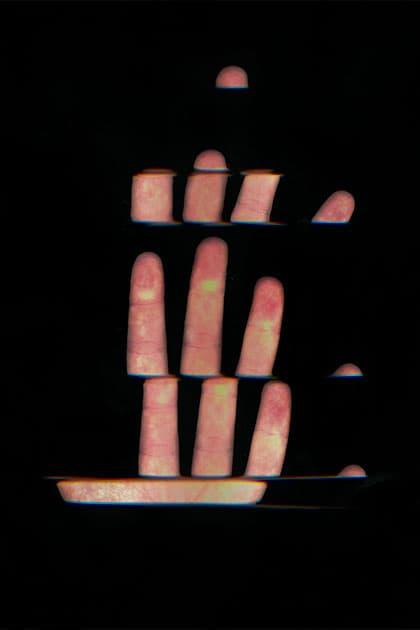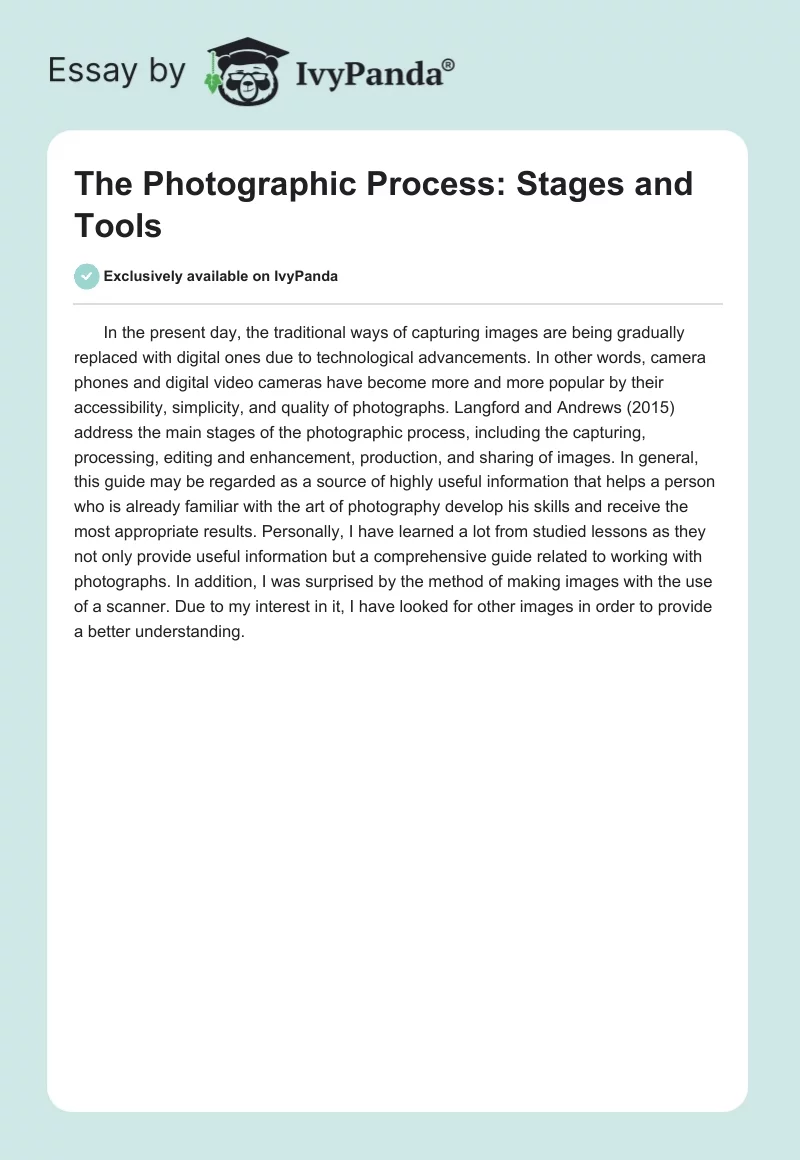In the present day, the traditional ways of capturing images are being gradually replaced with digital ones due to technological advancements. In other words, camera phones and digital video cameras have become more and more popular by their accessibility, simplicity, and quality of photographs. Langford and Andrews (2015) address the main stages of the photographic process, including the capturing, processing, editing and enhancement, production, and sharing of images. In general, this guide may be regarded as a source of highly useful information that helps a person who is already familiar with the art of photography develop his skills and receive the most appropriate results. Personally, I have learned a lot from studied lessons as they not only provide useful information but a comprehensive guide related to working with photographs. In addition, I was surprised by the method of making images with the use of a scanner. Due to my interest in it, I have looked for other images in order to provide a better understanding.


As previously mentioned, camera phones, digital video cameras, and even scanners may be used to make photographs. From a personal perspective, even if there are multiple devices that are currently available for users, it is their evidence-based knowledge, imaging skills, experience, and unlimited imagination that allows succeeding. These characteristics play a crucial role in processing, editing, and enhancing images as well. In the present day, software and various tools for photographers “provide a level of control that is far more sophisticated, repeatable and powerful than what was ever possible in a film-based workflow” (Langford & Andrews, 2015, p. 194). Nevertheless, the capabilities of devices and programs cannot guarantee the quality of a final product. That is why for both professionals and amateurs in the sphere of photography, it is essential to acquire knowledge and develop skills related to the production of images on the basis of others’ experiences. In this case, they contribute to the global growth of photographic workflow that leads to the industry’s development as increasing proficiency is closely connected with competition and improvement to succeed in it.
References
Amateur Photographer. (2019). How to make scanner art: Techniques and ideas for experimenting with scanography. Amateur Photographer. Web.
Langford, M., & Andrews, P. (2015). Langford’s starting photography: The guide to creating great images (7th ed.). Routledge.


